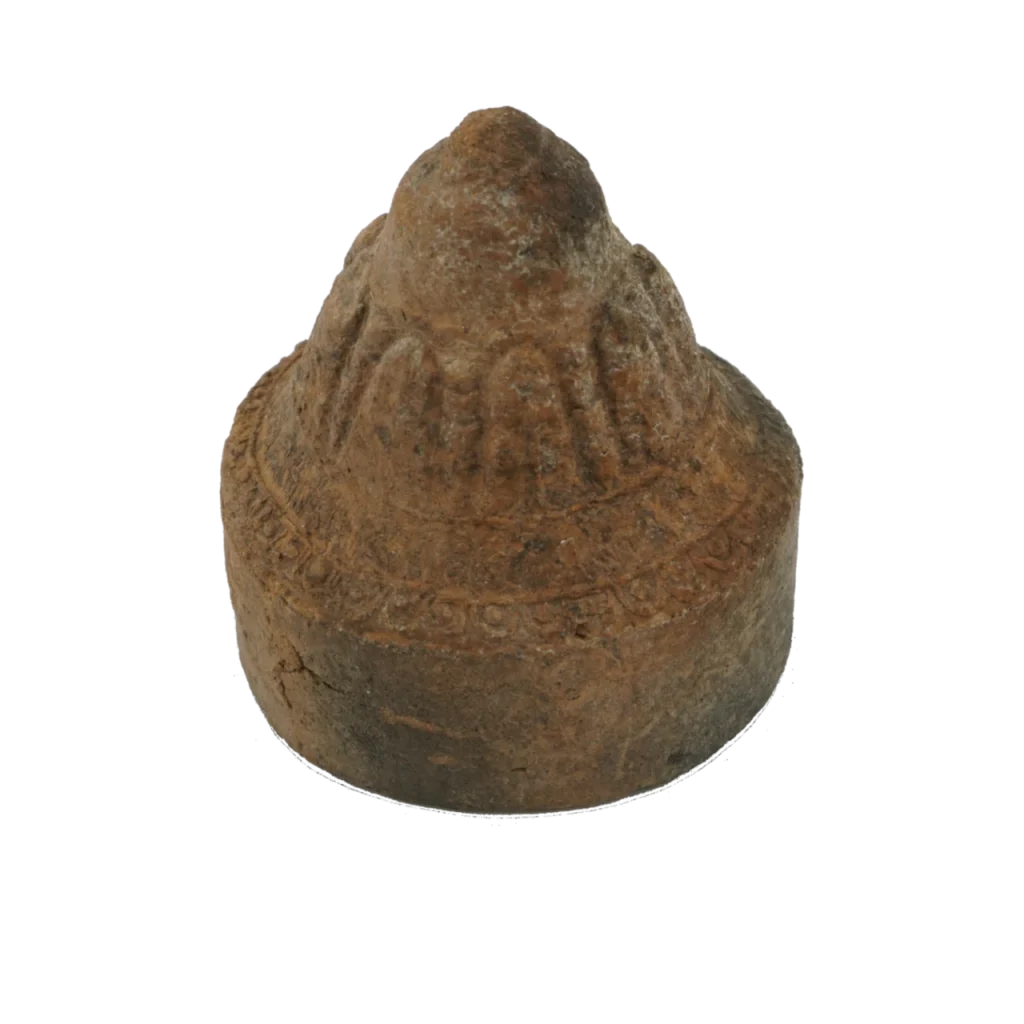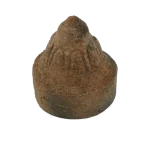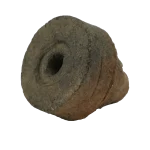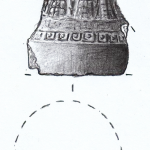
Tsatsa in the Shape of a Stupa
Location Karakorum
Dating 13th-14th cent.
Epoch Mongolian empire
Material Clay
Technique Formed
Type Excavation find
Description
Tsa-tsa is the Tibetan term for votive offerings or devotional objects made of dried or baked clay, which may be mixed with the ashes or bone meal of a saint or a venerable lama. Many of the stupa-shaped Tsa-tsas from Karakorum also contained reddish scraps of cloth. Tsa-tsas are often molded in series of thousands using models. The majority of tsa-tsas found in Karakorum are unfired. Tsa-tsas are deposited at sacred or spiritual places, in or around stupas, in tsa-tsa houses, statue bases or hollow bodies of large statues as well as in caves, on mountain passes or at prominent crossroads. Around 100,000 Tsa-tsas of different types have been deposited in the Karakorum pillared hall, which is interpreted as a stupa temple. The majority of the more than 10,000 tsa-tsas recovered were conical or stupa-shaped types. They thematize the eight stages in the life of the Buddha. This symbolism is most clearly expressed in forms depicting the eight different stupas of the “Sugata”, the “well [gone to Nirvana]”. Even more common are types such as the “Tsa-tsas with the many doors” or Tsa-tsas in the form of stepped temples. They symbolize individual stages in the life of the Buddha, such as the first discourse in Sarnath or the descent from Tusita Heaven in Kasi. The smallest, but iconographically most important group of Karakorum Tsa-tsas are ovoid votive tablets with depictions of the Buddha Sakyamuni and Aksobhya as well as Amitabha/amitayus. The pictorial forms are borrowed from Indian pala art.
3D Visualisation
3D Model: H. Rohland
Images: H. Rohland
Literature
Hüttel, H.-G. (2005) ‘Tsha-tshas’, in Dschingis Khan und seine Erben: Das Weltreich der Mongolen. München: Hirmer, p. 165.


